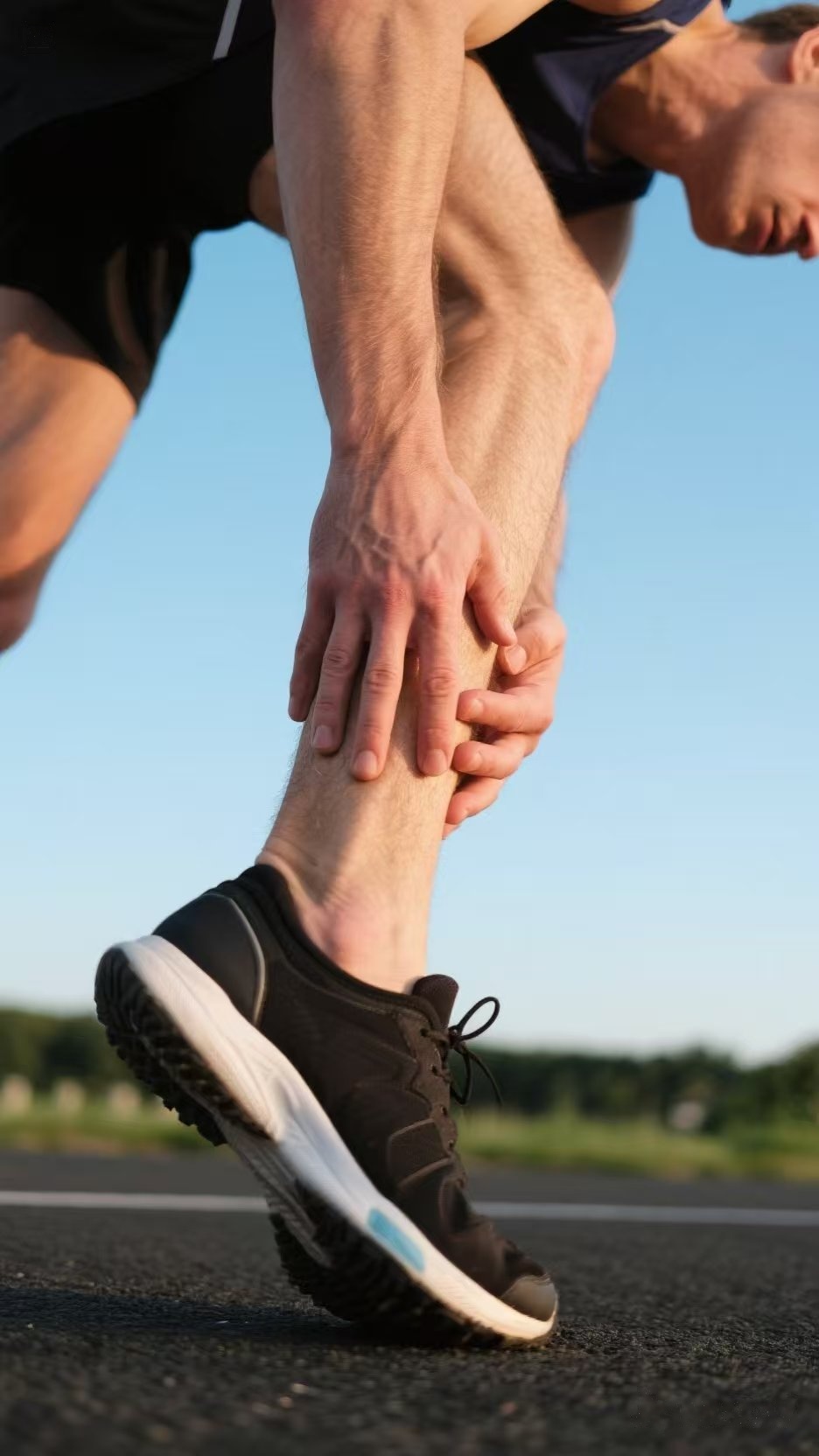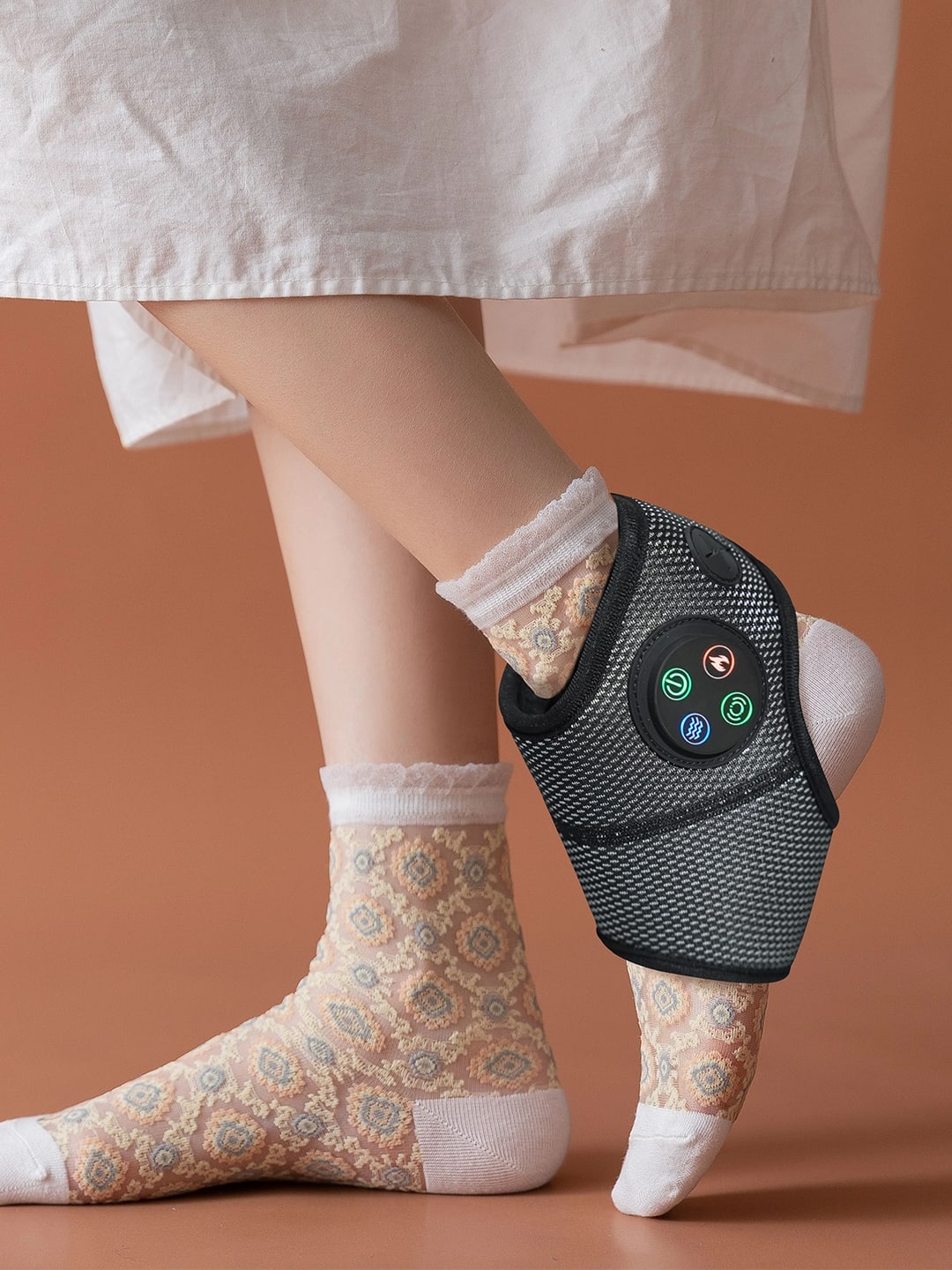Can a Vibrating Foot Massager Soothe Plantar Fasciitis for SG?
- By Grace
- Updated on
If you're an office worker logging long hours at a desk, or an avid runner pushing your limits, you might be all too familiar with the sharp, searing pain of Plantar Fasciitis (PF). This persistent heel discomfort can turn everyday activities into a dreadful chore, often leaving you wondering if true relief is even possible. The market is flooded with options, from sophisticated, high-tech foot massagers like those from OSIM to the more accessible percussion massage guns found on Lazada or Shopee. But what truly offers effective relief for PF, and is a simple **vibrating foot massager** the answer?
The truth is, many people in Singapore, especially those struggling with chronic heel pain, often feel frustrated by products that promise much but deliver little. As a senior evaluator in health care products, I’ve seen countless devices. It's really, really important to cut through the marketing noise and understand what genuinely works. This article will dive deep into the science and practical application of foot massagers, helping you make an informed decision and hopefully, step towards pain-free days.
What is Plantar Fasciitis, and Why Does It Cause Such Stubborn Heel Pain?
Plantar Fasciitis is essentially the inflammation of the plantar fascia, a thick band of tissue that runs across the bottom of your foot, connecting your heel bone to your toes. Think of it like a shock-absorbing bowstring supporting your arch. When this fascia is subjected to excessive stress or repetitive strain, it can develop tiny tears, leading to inflammation and that characteristic stabbing pain, particularly with your first steps in the morning or after periods of rest.
For office workers, prolonged sitting followed by sudden activity can aggravate it, while sports injuries are a common trigger for active individuals. Even wearing unsupportive footwear can contribute. This condition isn't just a minor ache; it’s a significant barrier to daily life, making simple tasks like walking around the neighborhood or resuming evening runs quite challenging. Understanding its root cause is the first step toward effective management.
- Symptoms: Sharp, stabbing pain in the heel, especially in the morning or after inactivity.
- Common Triggers: Prolonged standing, intense exercise (especially running), ill-fitting shoes, weight gain.
- Progression: Can worsen over time if left untreated, impacting mobility and quality of life.
The Science Behind How a Vibrating Foot Massager Offers Relief
How exactly can something that vibrates help such a stubborn condition? It's not magic, but rather grounded in several physiological principles. Firstly, vibration therapy helps to increase localized blood circulation. Improved blood flow brings vital nutrients and oxygen to the inflamed tissues, aiding in the natural healing process. This is why many find relief and faster recovery times with consistent use.
Secondly, the gentle oscillations from a **vibrating foot massager** can help relax tight muscles in the foot and calf, which often contribute to the tension on the plantar fascia. Furthermore, vibration can act as a counter-irritant, effectively "distracting" the nerves from the pain signals (this is known as the pain gate theory). It’s like when you rub a bumped elbow – the new sensation overrides the pain. This multifaceted approach makes vibration a powerful tool in managing PF pain.
Essentially, a **vibrating foot massager** works to gently coax your foot out of its pain cycle, promoting healing and relaxation. It’s like slowly untangling a tightly wound rope; you don't yank it, you gently work through the knots. This subtle, yet effective, mechanism is what makes it a game-changer for many individuals suffering from chronic foot discomfort.
Benefits of Targeted Vibration Therapy for Foot and Ankle Pain
The benefits of incorporating targeted vibration therapy into your routine extend beyond mere pain relief. Users, particularly those from active groups like the running community in Bedok, consistently report that vibration massagers or percussion massage guns are their top choice for effectively treating plantar fasciitis on both feet and ankles. This consensus stems from the tangible improvements they experience in their daily lives.
The ability of these devices to reach deep into tissues helps reduce inflammation and break down adhesions in the fascia, which are crucial steps for long-term recovery. For example, a fitness enthusiast from Jurong-Clementi hailed the KCLOSY relief massager, which incorporates air pressure, heat, vibration, and red light, as a "game-changer." They claimed it significantly alleviated their ankle pain, enabling them to resume evening runs around the neighborhood without discomfort.
This illustrates the real-world impact of consistent, targeted therapy. Beyond just masking pain, these massagers contribute to improved flexibility, faster recovery after physical activity, and can even play a preventative role against recurrence. When your feet and ankles are well-supported and receive adequate therapy, you're not just managing pain; you're actively working towards a more active, pain-free lifestyle.
- Pain Reduction: Directly reduces the sharp, stabbing pain associated with PF.
- Improved Flexibility: Helps loosen tight muscles and fascia, enhancing range of motion.
- Accelerated Recovery: Boosts blood flow, aiding in the repair of damaged tissues.
- Enhanced Mobility: Allows individuals to resume activities like running and walking without discomfort.
Navigating Your Options: High-Tech vs. Simple Vibratory Machine for PF Relief
When it comes to selecting a foot massager for Plantar Fasciitis, there's a clear distinction many in Singapore make: devices for simple relaxation versus those offering genuine therapeutic relief. It's a common misconception that any foot massager will do. An unfortunate experience shared by a user from Ang Mo Kio highlights this perfectly, who called a Shiatsu foot massager bought from a popular electronics store "marketing crap" that was painful on their heels and broke quickly. This reflects a general distrust toward the reliability of some massagers found on online platforms.
On one hand, you have the high-tech, specialized options, often featuring deep kneading, air compression, and heat. While these can feel incredibly relaxing, their aggressive kneading motions can sometimes exacerbate PF pain, especially if the heel is already inflamed. They also tend to be bulkier and more expensive. On the other hand, a simple percussion massage gun or a **handheld vibrating massager/vibratory machine** focuses primarily on delivering targeted vibrations, which many find more effective for therapeutic purposes. These are often more portable and can be used directly on specific pain points, like the heel or arch.
However, there's also a growing category of multi-functional devices, like the KCLOSY massager mentioned by the fitness buff. These devices, which combine features such as air pressure, heat, vibration, and even red light therapy, attempt to offer a comprehensive solution. It truly boils down to understanding your specific needs. Are you seeking deep tissue manipulation, targeted vibration, or a combination? Choosing the right tool is paramount for effective treatment.
Maximizing Relief: Tips for Using Your Vibrating Foot Massager Effectively
Getting the most out of your **vibrating foot massager** involves more than just plugging it in and turning it on. Consistency is key. Aim for 10-15 minutes per session, once or twice a day, especially after periods of rest or mild activity. Start with a lower intensity and gradually increase it as your comfort level allows. Focus the vibration on your heel, arch, and calf muscles, as tightness in the calf can directly contribute to plantar fascia strain.
Based on my experience evaluating many devices and user feedback, don't rely solely on the massager. Complement its use with gentle stretches for your calves and plantar fascia. Applying ice after a session can also help reduce any residual inflammation. And remember, listen to your body. If you experience increased pain or discomfort, stop immediately. A little warmth often helps muscles relax, too, so considering a device with heat can be beneficial.
While a **vibrating foot massager** can be a powerful tool in your recovery arsenal, it's crucial to know when to seek professional help. If your pain is severe, doesn't improve with regular use, or if you experience numbness or tingling, consult a doctor or a physiotherapist. They can provide a proper diagnosis and recommend a comprehensive treatment plan that might include physical therapy, custom orthotics, or other medical interventions. Your wellness journey is a marathon, not a sprint!
- Start Slow: Begin with shorter sessions and lower intensity.
- Target Areas: Focus on the heel, arch, and calf.
- Combine with Stretches: Integrate calf and plantar fascia stretches into your routine.
- Listen to Your Body: Stop if pain increases; consult a professional if pain persists.
In conclusion, a well-chosen **vibrating foot massager** can indeed be a valuable ally in your fight against Plantar Fasciitis. From the deep relaxation offered by multi-functional devices to the targeted relief of a simple **handheld vibrating massager/vibratory machine**, the key lies in understanding what your feet truly need. It's about moving beyond the "marketing crap" and finding a device that aligns with scientific principles of pain relief and tissue healing.
By investing in the right tool and using it consistently and correctly, you empower yourself to manage your symptoms, accelerate recovery, and regain your active lifestyle. Remember, your foot health is a cornerstone of overall well-being. So, go ahead, explore the options, and take that step towards lasting comfort. You deserve to walk, run, and live without the shadow of heel pain.
Frequently Asked Questions
Do **vibrating foot massagers** work?
Yes, **vibrating foot massagers** can be effective for relieving pain associated with Plantar Fasciitis. They work by increasing blood circulation, relaxing tight muscles in the foot and calf, and providing a sensory distraction that can help reduce pain perception. Many users, particularly those with conditions like PF, report significant relief and improved mobility with consistent use.
How to use **vibrating foot massager**?
For best results, use your **vibrating foot massager** for 10-15 minutes, once or twice daily. Start with a low intensity and gradually increase it. Focus the vibration on your heel, arch, and the ball of your foot. It's also beneficial to target your calf muscles, as tightness there can contribute to PF. Complement its use with regular stretching and listen to your body, adjusting intensity as needed.
Can **vibrating massagers** cause nerve damage?
When used properly and according to manufacturer instructions, **vibrating massagers** are generally safe and are not known to cause nerve damage. However, excessive force, prolonged use on one spot at high intensity, or using a massager on an already injured or highly sensitive area could potentially cause discomfort or bruising. If you have pre-existing nerve conditions or severe pain, it’s always best to consult a healthcare professional before using any massager.
This reply is generated based on currently verifiable public information. It is recommended to cross-check key content with authoritative sources.






